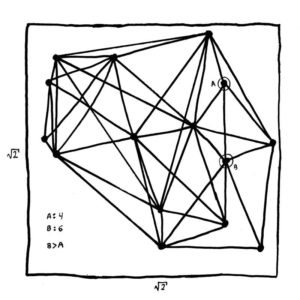import pandas as pd
from random import random
from math import floor, log
import matplotlib
from matplotlib import pyplot as plt
from numpy.random import normal
group = {}
growth = {}
countries = [('China', 137e7, 274e6), ('India', 127e7, 254e6), ('United States', 324e6, 648e5), ('Indonesia', 258e6, 516e5), ('Brazil', 206e6, 412e5), ('Pakistan', 202e6, 404e5), ('Nigeria', 186e6, 372e5), ('Bangladesh', 156e6, 312e5), ('Russia', 142e6, 284e5), ('Japan', 127e6, 254e5), ('Mexico', 123e6, 246e5), ('Philippines', 103e6, 206e5), ('Ethiopia', 102e6, 204e5), ('Vietnam', 953e5, 1906e4), ('Egypt', 947e5, 1894e4), ('Iran', 828e5, 1656e4), ('DR Congo', 813e5, 1626e4), ('Germany', 807e5, 1614e4), ('Turkey', 803e5, 1606e4), ('Thailand', 682e5, 1364e4), ('France', 668e5, 1336e4), ('United Kingdom', 644e5, 1288e4), ('Italy', 62e6, 124e5), ('Burma', 569e5, 1138e4), ('South Africa', 543e5, 1086e4), ('Tanzania', 525e5, 105e5), ('South Korea', 509e5, 1018e4), ('Spain', 486e5, 972e4), ('Colombia', 472e5, 944e4), ('Kenya', 468e5, 936e4), ('Ukraine', 442e5, 884e4), ('Argentina', 439e5, 878e4), ('Algeria', 403e5, 806e4), ('Poland', 385e5, 77e5), ('Uganda', 383e5, 766e4), ('Iraq', 381e5, 762e4), ('Sudan', 367e5, 734e4), ('Canada', 354e5, 708e4), ('Morocco', 337e5, 674e4), ('Afghanistan', 333e5, 666e4), ('Malaysia', 31e6, 62e5), ('Venezuela', 309e5, 618e4), ('Peru', 307e5, 614e4), ('Uzbekistan', 295e5, 59e5), ('Nepal', 29e6, 58e5), ('Saudi Arabia', 282e5, 564e4), ('Yemen', 274e5, 548e4), ('Ghana', 269e5, 538e4), ('Mozambique', 259e5, 518e4), ('North Korea', 251e5, 502e4)]
groupKeys = []
scale = 50
for i, j, k in countries:
group[i] = [[0, j, 0, k]]
growth[i] = [0]
groupKeys.append(i)
group[groupKeys[0]] = [[13, countries[0][1]-13, 0, countries[0][2]]]
growth[groupKeys[0]] = [13]
e = 2.7183
def eDistribute(bottom, top, original):
if(top == bottom):
return top
return top*e**((bottom-original)/(top-bottom))
def grow(sets, keys, past, index, spread=lambda a,b:1, expose=lambda a:1, expand=0.05, cut=5, spreadFactor=0.5, growthFactor=10):
spreadSum = 0
for i in keys:
if(sets[i][index][0]+sets[i][index][1] == 0):
adjExpand = 0
else:
adjExpand = expand * sets[i][index][1]/(sets[i][index][0]+sets[i][index][1])
if(len(sets[i]) == index+1):
sets[i].append([sets[i][index][0], sets[i][index][1], sets[i][index][2], sets[i][index][3]])
past[i].append(0)
for j in keys:
if(i != j):
currentSpread = spread(past[i], past[j])
spreadSum -= currentSpread
todaySpread = round(normal(1.5, 1)*eDistribute(0, spreadFactor, currentSpread)*sets[i][index][0]*expand)
if(todaySpread > 0):
if(len(sets[j]) == index+1):
sets[j].append([sets[j][index][0]+todaySpread, sets[j][index][1]-todaySpread, sets[j][index][2], sets[j][index][3]])
past[j].append(todaySpread)
else:
sets[j][index+1][0] += todaySpread
sets[j][index+1][1] -= todaySpread
if(sets[j][index+1][1] < 0):
sets[j][index+1][0] += sets[j][index+1][1]
sets[j][index+1][1] = 0
past[j][index+1] += todaySpread
currentSpread = expose(past[i])
spreadSum -= currentSpread
newGrowth = round(normal(1.5, 1)*eDistribute(0, growthFactor, currentSpread)*sets[i][index][0]*adjExpand)
sets[i][index+1][0] += newGrowth
sets[i][index+1][1] -= newGrowth
past[i][index+1] += newGrowth
if(sets[i][index+1][1] < 0):
sets[i][index+1][0] += sets[i][index+1][1]
past[i][index+1] -= sets[i][index+1][1]
sets[i][index+1][1] = 0
if(index >= cut):
if(past[i][index-cut] > sets[i][index+1][0]):
past[i][index-cut] = sets[i][index+1][0]
sets[i][index+1][0] -= past[i][index-cut]
sets[i][index+1][2] += past[i][index-cut]
for one in sets:
spreadSum += sets[one][index+1][0]
if(sets[one][index+1][0] > sets[one][index+1][3]):
spreadSum += 10*(sets[one][index+1][0]-sets[one][index+1][3])
return spreadSum
impact = 0
impacts = {}
spreadFactor = 0.5
growthFactor = 1.25
meantime = 11
incperiod = 8
strictness = 100, 70
def adj(maxVal):
def decorator(f):
def wrapper(*args, **kwargs):
raw = f(*args, **kwargs)
if(raw < maxVal):
return maxVal - raw
return 0
return wrapper
return decorator
compensate = growthFactor*scale + spreadFactor*scale**2
def testAlgs(ban, close):
i = 0
impact = 0
while i < 10:
j = 0
while i < 150:
impacts[str(i)] = impact
impact = floor(impact + compensate + grow(group, groupKeys, growth, i, spread=lambda a,b:ban(a, b, i-incperiod), expose = lambda a:close(a, i-incperiod), expand = 0.029, cut=meantime+incperiod, spreadFactor=spreadFactor, growthFactor=growthFactor))
j += 1
return impact / 10






